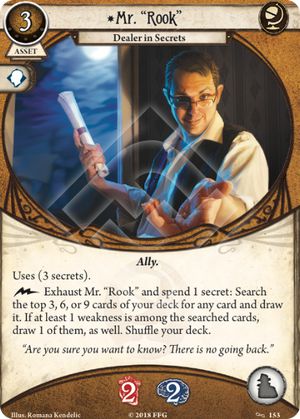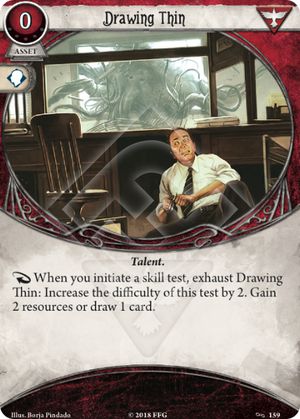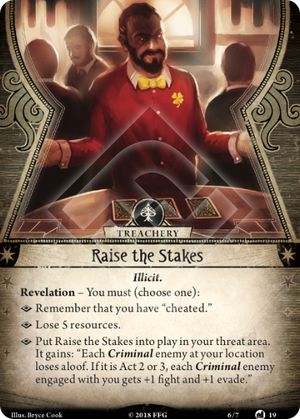
Out of curiosity, I decided to pick apart each basic weakness in the game, and how effective Rook is at mitigating the timing of them:
Core Set
Amnesia - This one could go either way. If you have Amnesia in your deck, you should aim to play the assets you can before playing Rook. If you expect to draw lots of cards (and since you have access to Rook you likely do), the earlier this is played the better. Take note of when Higher Education needs to be online for you, and figure out when best to time Amnesia. If the 1 card left in your hand is Cryptic Research, you should be alright.
Paranoia - Already one of the most benign weaknesses, but with Rook it's trivial. Extra points for playing Rook with exactly 3 resources left in the pool.
Haunted, Psychosis, and Hypochondria - Action 1: play Rook; Action 2&3, goodbye weakness. Not a bad opening play at all, or anytime you have an extra turn to deal with it. Rook definitely helps with these.
Mob Enforcer - Best played right after an Emergency Cache to help Parley him effectively. Great timing here.
Silver Twilight Acolyte - Best played after you get some weapons out. You can also time this on a round the agenda would advance anyway to mitigate the doom for 1 round. Definitely be cautious about this one- it could be a short scenario if you happen to whiff on killing this guy. Low combat investigators should probably keep this one buried as long as possible, especially if playing solo.
Stubborn Detective - As above, make sure you have a weapon for this guy. Joe Diamond and Roland Banks can maybe afford to be a bit riskier with him (fitting, as they are stubborn detectives themselves). Be cautious with Finn Edwards, as he can more easily evade the detective and can probably even generate some Pickpocketing economy with him, but will lose the free evade action each turn. I'd say for low combat solo investigators you're better off keeping the Detective buried as long as you can- even evasive investigators don't want this guy chasing them all scenario long.
Dunwich Legacy
Indebted - Obviously this doesn't go in your deck, so Rook can't mitigate this at all. This means that if you draw a weakness, it'll always be your investigator specific one until a scenario makes you add an extra weakness to your deck. Downside here is no choice from drawing 2 weaknesses at once, but the upside is you only have to prepare for one possible weakness every time.
Internal Injury and Chronophobia - See above for the equivalent Core Set two action weaknesses.
Through the Gates - By drawing it early you wont get blindsided if the top card of the library happens to be some important asset you have in play (e.g. Lightning Gun). The only other way to make use of the timing on this is to set up the top card of your library. Something like Scroll of Secrets for example could really help here.
Path to Carcosa
Overzealous - No one likes drawing two encounter cards, even if they get to choose when it happens. This one depends heavily on the investigator and the player count. If you have the opportunity to be in the vicinity of other investigators who can commit to tests, then play Rook. If you're playing solo and the encounter deck is full of enemies, then Roland Banks can actually get some value from this, though he'll still probably have at least one skill check out of the two cards. If on the other hand you have an encounter deck full of Hexes and Terrors, and you happen to be Finn Edwards, you don't play Rook unless you have a stockpile of Guts and Logical Reasoning.
Drawing the Sign - See above for the equivalent Core Set two action weaknesses.
The Thing That Follows - This one should be kept buried as long as possible, so Rook doesn't help here.
Unspeakable Oath (Bloodthirst), Unspeakable Oath (Curiosity), and Unspeakable Oath (Cowardice) - These weaknesses are so tame already for anyone able to take Rook. If you're a Seeker you might have some trouble triggering Bloodthirst or Cowardice, but the actually downside of having a hidden card clogging up your hand early is rarely a pressing issue. Generally it makes sense to draw into these early to maximize your ability to resolve them before the end of the scenario, so Rook helps quite a lot here.
The Forgotten Age
Dark Pact - You definitely don't want to draw into Dark Pact ever, no amount of timing really helps with it since it's not a Revelation based weakness. You can't mitigate the doom on The Price of Failure either, so at best you can use Rook to time the damage so that you have time to heal it instead of being assaulted all at once towards the end of a scenario. Overall though I'd say Rook hurts more than he helps this one. EDIT: Well, just take the two damage onto Rook and call it a day. Could be worse, definitely not that bad of a weakness overall.
Doomed - I love the idea that you can use Rook to kill your investigator faster and start fresh. Draw Doomed twice in scenario 1, draw into Accursed Fate twice in scenario 2, then The Bell Tolls in scenario 2 or 3, starting fresh in scenario 3 or 4. It might even be faster than that, I'm not sure- getting to the death card in scenario 1 seems very unlikely to me though. Some people will get a kick out of that, but at the end of the day if you're trying to mitigate your basic weakness, Rook is the single worst thing you could do for yourself.
The Circle Undone
The 13th Vision - See above for the equivalent two action Core Set weaknesses.
The Tower • XVI - Definitely similar to Mob Enforcer. Make sure you have the resources to pay for this: 3 for Rook, 4 for the Tower, so 7 total. I would argue that Rook is slightly less effective here since you can't shuffle away The Tower when you draw your opening hand, so there's a good chance that you'll deal with it turn 1 action 1 anyway.
The Dream Eaters
Narcolepsy - You should make sure you Rook at the very end of your turn (or during someone else's turn), before you get locked into doing nothing. Chances are someone is nearby to wake you up and can spare an action to do so.
Or if you know you're going to be hit for damage/horror somehow anyway, you could grab this with Rook and break it yourself. This is one you have to be somewhat mindful of timing wise, but overall it's quite tame.
Self-Centered - Yet another "2 action: discard" weakness. Rook is great for these to begin with, but this one is particularly benign if you're far from the group anyway. Be cautious about your actions and make sure you either have the actions to kill it or you don't need to help anybody in the immediate future.
Your Worst Nightmare - Similar to Narcolepsy, this one is best triggered if you know someone else is nearby to deal with it. It should be noted however that you are allowed to Evade your nightmares. Particularly useful knowledge for Finn Edwards or Ursula Downs, or even Mandy Thompson with some access.
Kleptomania - Okay, this one is the weirdest. There could be a situation where someone else has something you want (usually resources, but maybe those Track Shoes are looking good?), in which case you could actively use Rook just to be able to steal their stuff. That's wild. So yeah, that's a thing. Otherwise it's a recursive weakness so it's one that's going to be very annoying to use with Rook unless you're willing to let it sit and tank some horror.
Final Thoughts
Overall I'd say Rook definitely helps mitigate most of the basic weaknesses in the game. There are some where Rook is less helpful than you'd like him to be for the Opportunity Cost of putting him in your deck, and there are a couple that are actually much worse if drawn early. Cards like No Stone Unturned and Eureka! are probably better suited for drawing the cards you need without triggering such a weakness. Of course none of this matters much if you're building a combo based deck- Rook is the man for decks that need a specific card or set of cards to work.
Bonus Round: Notable Investigator Specific Weaknesses
Cover Up - Always better drawn early than late. Roland loves Rook.
Rex's Curse - This one should be kept buried as long as possible since it gets shuffled back in anyway. Rex hates Rook.
Searching for Izzie - My goodness this one is such a pain to complete unless it's drawn early. Jenny loves Rook. Just be mindful of the locations in play and make sure you don't block yourself off from wherever it should land (e.g. locations that say "You can't move into X" which need their effect taken away somehow late in the scenario).
The King in Yellow - Stockpile on skill cards, then play Rook. Definitely better than being caught off guard after an important skill check.
Crisis of Identity - If you play Rook and he draws into this, you have to discard Rook from play along with any other Seeker cards, which honestly isn't so bad- 3 resources and 1 card to grab a card you really need and cancel a Crisis is still good. So obviously you want to do this earlier rather than later, as in before all the Seeker assets end up in play. Also, since there's two Crises in the deck, you have a much higher chance of drawing one along with your basic weakness, so if your basic weakness is really terrible, there's less risk when playing him. Lola is also the kind of investigator who benefits from draw and tutoring effects, so Rook is well suited for her.
Unsolved Case - Again, a lot like Indebted. You'll only have your basic weakness in your main deck, so you only have to prepare for that one weakness when playing Rook (still keeping 1 resource on reserve to pay for Unsolved Case next turn should it come up).




